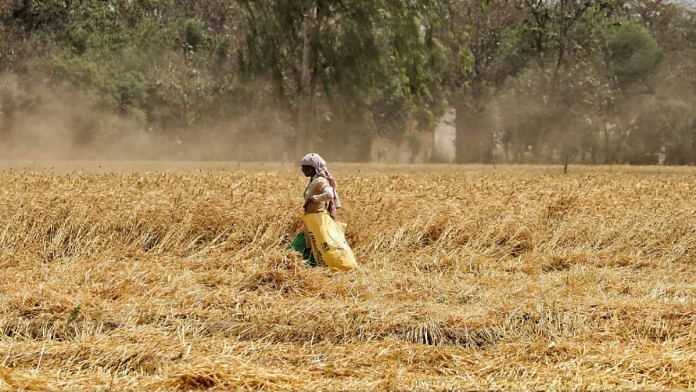New Delhi: India’s agricultural exports soared to a six-year high of over $19 billion in 2020-21.
According to the Agricultural and Processed Foods Exports Development Authority, the national agricultural commodity export grew by nearly 25 per cent over $15.9 billion in 2019-20.
This surge amid the Covid-19 pandemic is driven by record-high rice exports — 13.9 million tonnes (MT) in non-basmati and 4.6 MT in the basmati category, and a six-year high in wheat exports — 2.08 MT.
India’s combined wheat and rice exports touched a record high of almost 20 MT in the 2020-21 fiscal.
Also read: 2020 lockdown shut 11% women MSMEs, only 1% got back on feet with govt help, finds study
Lower price, bumper production
According to experts, two primary factors are behind this surge. Firstly, India’s foodgrains are available at a lower rate against other exporting nations. Secondly, the bumper production in the country has also provided the necessary push.
“The highest global food price index and international prices of wheat and rice in last six years have made the exports of these foodgrains from India more viable as compared to other exporting countries as it’s available at cheaper prices here,” said Rahul Chauhan, a researcher at commodity market research firm IGrain India.
“Moreover, the huge distribution of foodgrain under PMGKY (Pradhan Mantri Garib Kalyan Yojana) from the massive stockpile of grains in the central pool buffer stock along with its leakage in the market suppressed the demand for wheat and rice in domestic markets. This resulted in lower market prices of these commodities while making large quantities of it available for export,” he told ThePrint.
“The geographical location of India which is close to the major importing nations such as the Middle East and Southeast Asian nations makes the export much more profitable and easy,” Chauhan added.
With the UN Food and Agricultural Organisation’s global food price index at its highest since May 2014, the price of wheat and rice in major exporting countries remains higher than in India.
Indian wheat is priced at $280/tonne against Australia’s $300/tonne, Europe, US and Canada’s $310-320/tonne, and Russia or Ukraine’s $290/tonne.
Similarly, the price of Indian rice is hovering around $360-390/tonne against Thailand’s $495/tonne, Vietnam’s $470/tonne, and Pakistan’s $440/tonne.
The MSP factor
Most of the exported foodgrains are supplied from major producing states such as Uttar Pradesh, Bihar, West Bengal, Gujarat and Rajasthan, say experts.
While these states are major producers of wheat and rice, the procurement by government at minimum support price (MSP) remains minimal, forcing farmers to sell their produce at market prices making it viable for exports.
“Rise in wheat exports this year has largely been driven by an increase in global commodity prices. Compared to wheat from other markets, Indian wheat is available at a competitive price of $280-285 per tonne. This factor has provided a major impetus for an increase in the demand for Indian wheat in the international market,” said Taranjeet Singh Bhamra, founder and chief executive of AgNext Technologies, an agro commodity-related venture.
“Also, despite high procurement of wheat by the government this year, large surplus quantities of the grain remained in the market due to the bumper harvest. Consequently, there were no export limits or restrictions set on wheat trading,” he said.
“Despite the devastating pandemic gripping the country, India’s agri-exports have flourished this year. The green shoots in wheat export have opened up the opportunity for many Indian agribusinesses to gain a foothold in international markets,” Bhamra added.
Estimates for this fiscal
According to the advance foodgrain estimates by the agriculture ministry, the total production of rice in 2021-22 is estimated at a record 121.46 MT against 118 MT last year. This is also higher by 9 MT than the average production of 112.44 MT in the last five years.
Until 24 May, 77.2 MT of rice had already been procured by government agencies.
Similarly, the production of wheat in the country is estimated at a record 108 MT against 107 MT last year, which is higher by 8.32 MT than the average wheat production of 100.42 MT.
However, the procurement of wheat remained at 39.06 MT as on 24 May.
Also read: Consumer demand drop in lockdown could cut palm oil prices, Vanaspati & soap costs may fall



